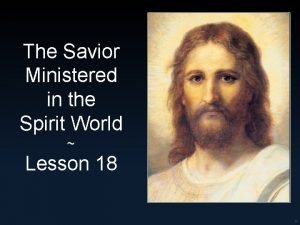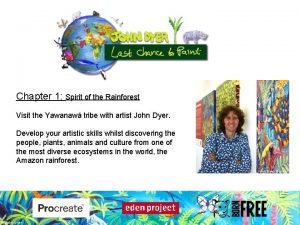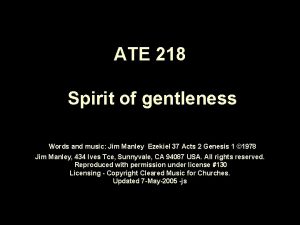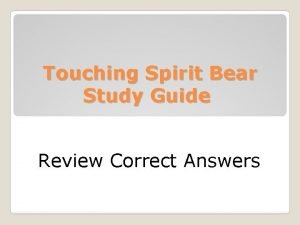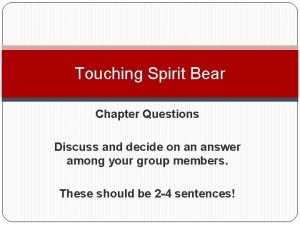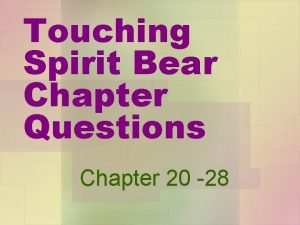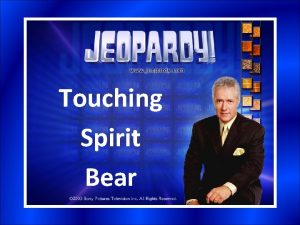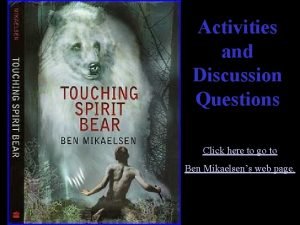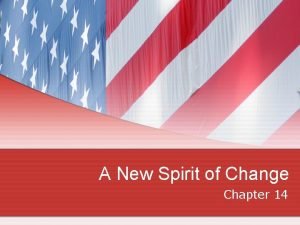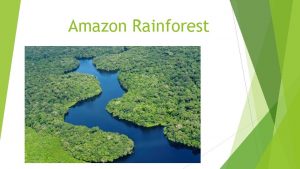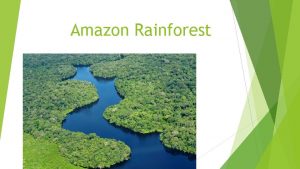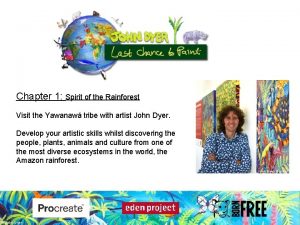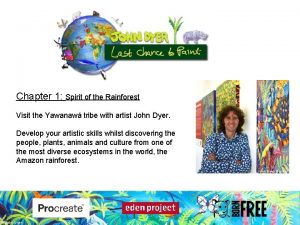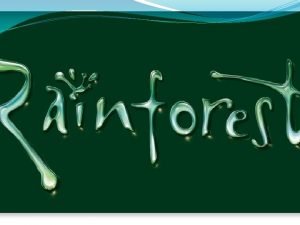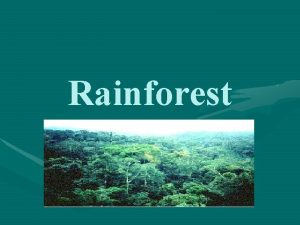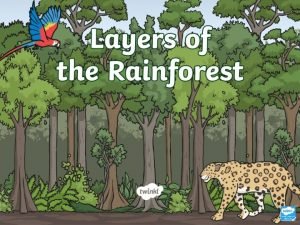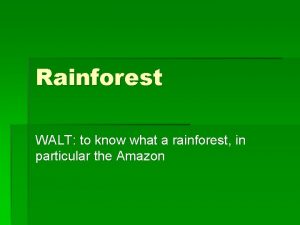Chapter 1 Spirit of the Rainforest Visit the













- Slides: 13

Chapter 1: Spirit of the Rainforest Visit the Yawanawá tribe with artist John Dyer. Develop your artistic skills whilst discovering the people, plants, animals and culture from one of the most diverse ecosystems in the world, the Amazon rainforest. © John Dyer Gallery © John Dyer

© John Dyer Lesson 4. Live from Brazil Learning objectives: To ask well thought out questions about a place, people and environment To understand the importance of a balance between people, plants and animals in an ecosystem.

Camel © John Dyer is a modern (contemporary) artist, born in 1968. He focuses on colourful landscapes, architecture, gardens and notable events. John started his career as a photographer and his first assignment was in the Amazon rainforest. John is traveling with his daughter, Martha -Lilly (a musician) and explorer Robin Hanbury-Tenison. © John Dyer Gallery

In Mutum, John is painting alongside Amazon Indian artist Nixiwaka Yawanawá and several other members of the tribe. Together they will be exploring the deep connection between the tribe and the spirits of the rainforest, through art. © Nixiwaka Yawanawá

Camel 1. Start with a question word: Where, What, How, Why, When…. 2. Consider your subject: Are you talking to an individual or group directly? You Are you talking to someone about someone else? [Name], He, She, They 3. Add a verb: Are you talking to someone about an object? It, They Work, Think, Make, Protect, Get…. . Examples: • • • © John Dyer What does Nixiwaka think about deforestation? How did you get your painting equipment to the village? What does it smell like in the rainforest?

Camel You can also add other phrases to make your sentence more complex: • • Although. . . As. . . Despite the fact that. . . Even though. . . If. . . In general. . . I would like to. . . Given that. . . Examples: • • • © John Dyer As a member of the Yawanawá tribe what does Nixiwaka think about deforestation? Given that you are using modern art materials how did you get them to the village? In general what does it smell like in the rainforest?

Camel What are the top 10 questions your class would like to ask? 1. 2. 3. 4. 5. 6. 7. 8. 9. 10. © John Dyer

Camel Join the Last Chance to Paint team in the rainforest: Dates: 5 th – 13 th June 2019 Conversations can continue after these dates. Don’t forget to join The Facebook group for more information about the live sessions. © John Dyer

© John Dyer Tell me… • …something you know that you didn’t know an hour ago • …three questions and answers you found particularly interesting

What would happen if we took all the resources we wanted from the world with no thought for tomorrow? © BFF

An ecosystem is an area where biological elements (e. g. plants and animals) interact with non-biological elements (e. g. soil and water). An ecosystem can be as small as a single tree or as big as a forest. © John Dyer Ecosystems must have balance if they are to work properly and be sustainable. If even one change takes place to a component, this can have a knock on effect for the rest of the ecosystem. Pixaby. com

Jaguar (carnivore/ secondary consumer) Human (omnivore – eating both plants and animals) Macaw (herbivore/ primary consumer) © www. tigersintheforest. com Butterfly (pollinator/ primary consumer) Pixaby. com © Emily Whitfield-Wicks/Eden Pixaby. com Banana (producer) Capuchin (herbivore/ primary consumer) Lobsterclaw (producer) Pixaby. com Decomposers and detritivores © BFF

© John Dyer Tell me… • …why balance is important in the rainforest
 The savior's visit to the spirit world
The savior's visit to the spirit world John dyer rainforest
John dyer rainforest Come holy spirit come inflame our souls with love lyrics
Come holy spirit come inflame our souls with love lyrics Spirit spirit of gentleness
Spirit spirit of gentleness Touching spirit bear worksheets
Touching spirit bear worksheets Touching spirit bear chapter 10 summary
Touching spirit bear chapter 10 summary Touching spirit bear chapter 14 questions and answers
Touching spirit bear chapter 14 questions and answers Touching spirit bear chapter 20
Touching spirit bear chapter 20 Touching spirit bear chapter 11 summary
Touching spirit bear chapter 11 summary Chapter 19 summary touching spirit bear
Chapter 19 summary touching spirit bear Chapter 14 a new spirit of change
Chapter 14 a new spirit of change Visit gol
Visit gol Wms adani login
Wms adani login Site initiation visit powerpoint presentation
Site initiation visit powerpoint presentation
